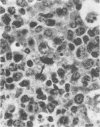Abstract
Although more than 320 cases of human ehrlichiosis have been diagnosed in 27 states since 1986, the reservoir host or hosts remain unknown. Since antibodies reactive to Ehrlichia chaffeensis, the etiologic agent of human ehrlichiosis, have been found in white-tailed deer (Odocoileus virginianus), we experimentally evaluated the susceptibilities of four white-tailed deer to infection with E. chaffeensis and Ehrlichia canis, a closely related species. A fifth deer served as a negative control. Isolation and nested PCR amplification results from peripheral blood indicated that E. chaffeensis circulated for at least 2 weeks. The deer developed antibodies to E. chaffeensis by day 10 after inoculation, but there was no indication of clinical disease. Immunohistochemical staining identified E. chaffeensis within macrophage-type cells in lymph nodes. The deer inoculated with E. canis did not become infected and did not seroconvert. These results indicate that white-tailed deer can support an E. chaffeensis infection with resulting rickettsemia of at least 2 weeks. The resistance to infection and the absence of seroconversion upon exposure to E. canis indicate that antibody responses previously detected among wild deer are not E. canis cross-reactions. The role of deer as competent reservoirs in the life cycle of E. chaffeensis remains to be explored with suspected tick vectors.
Full text
PDF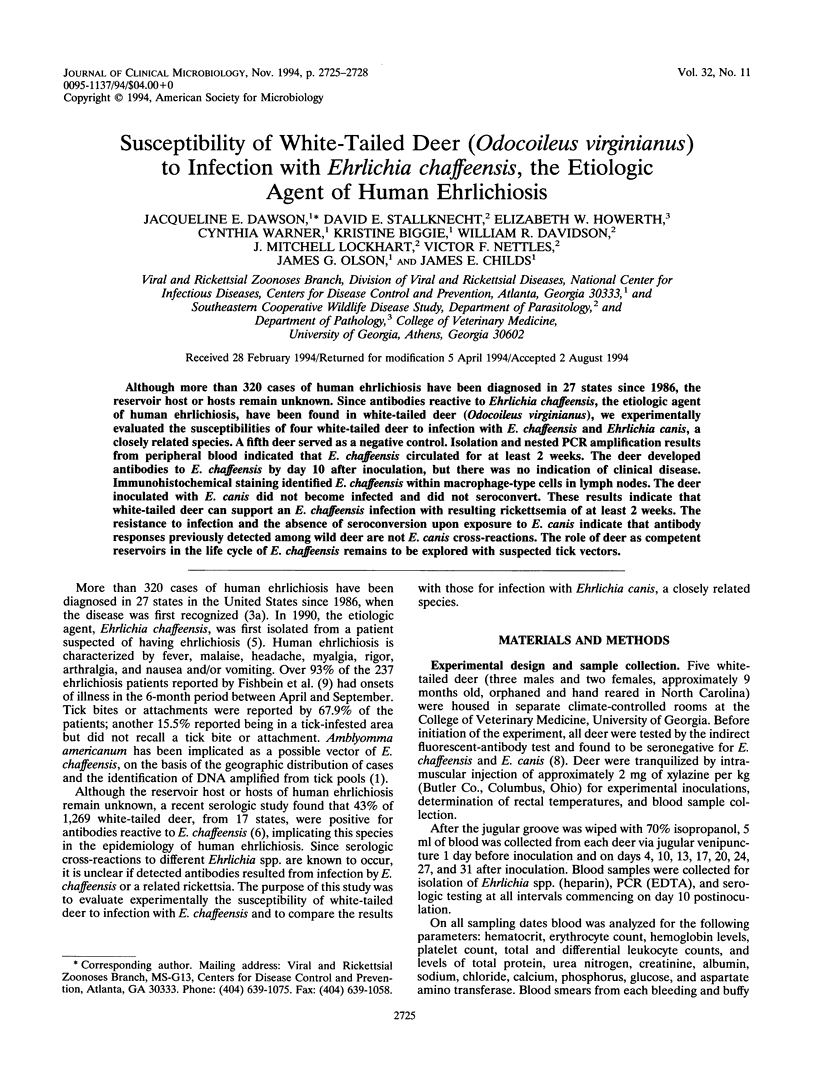
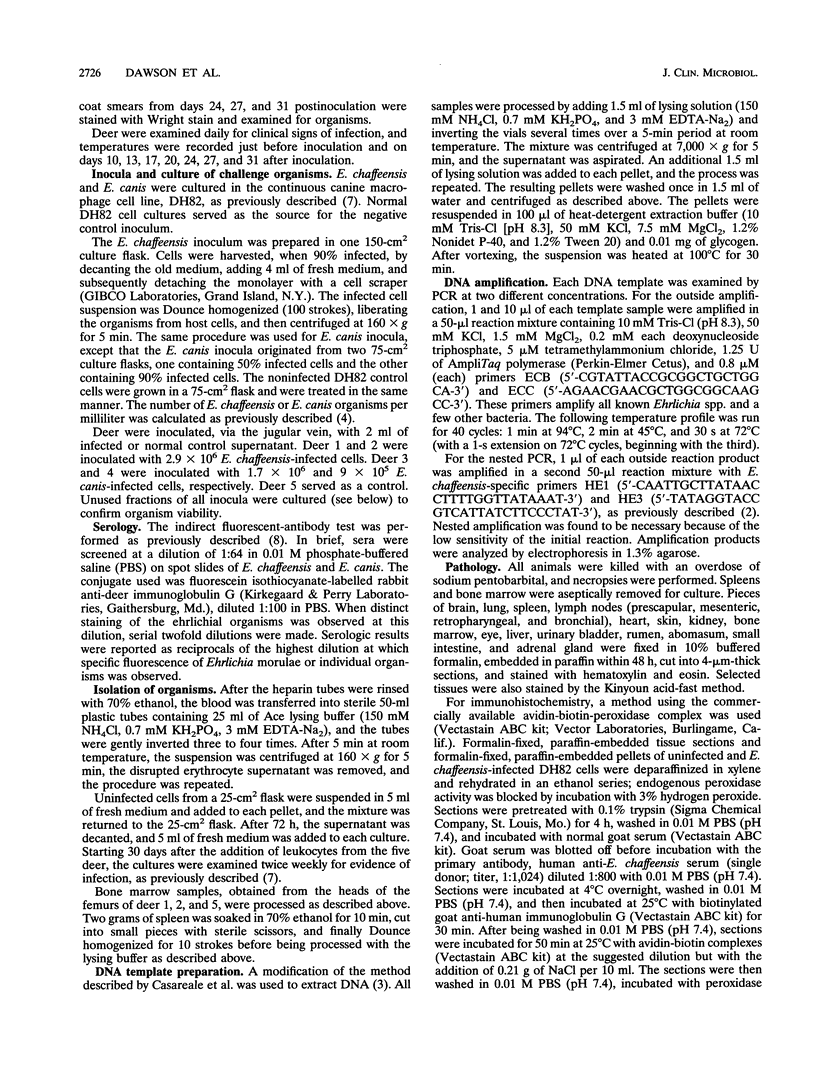
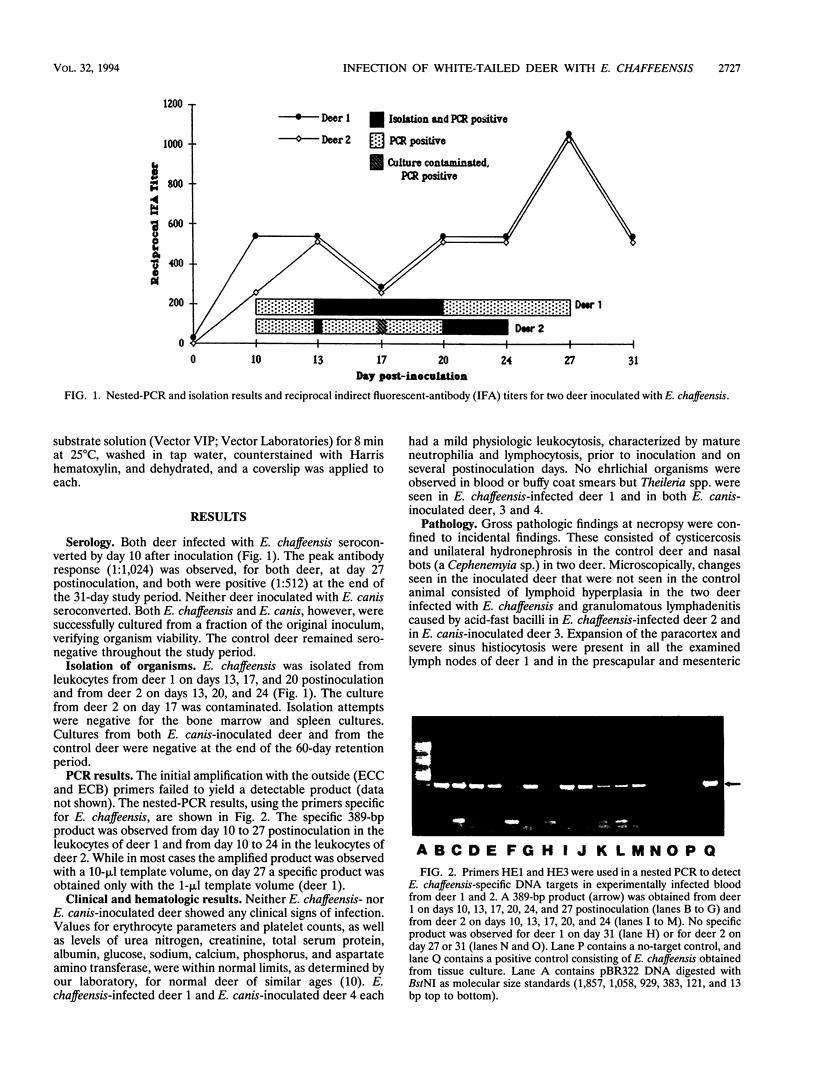
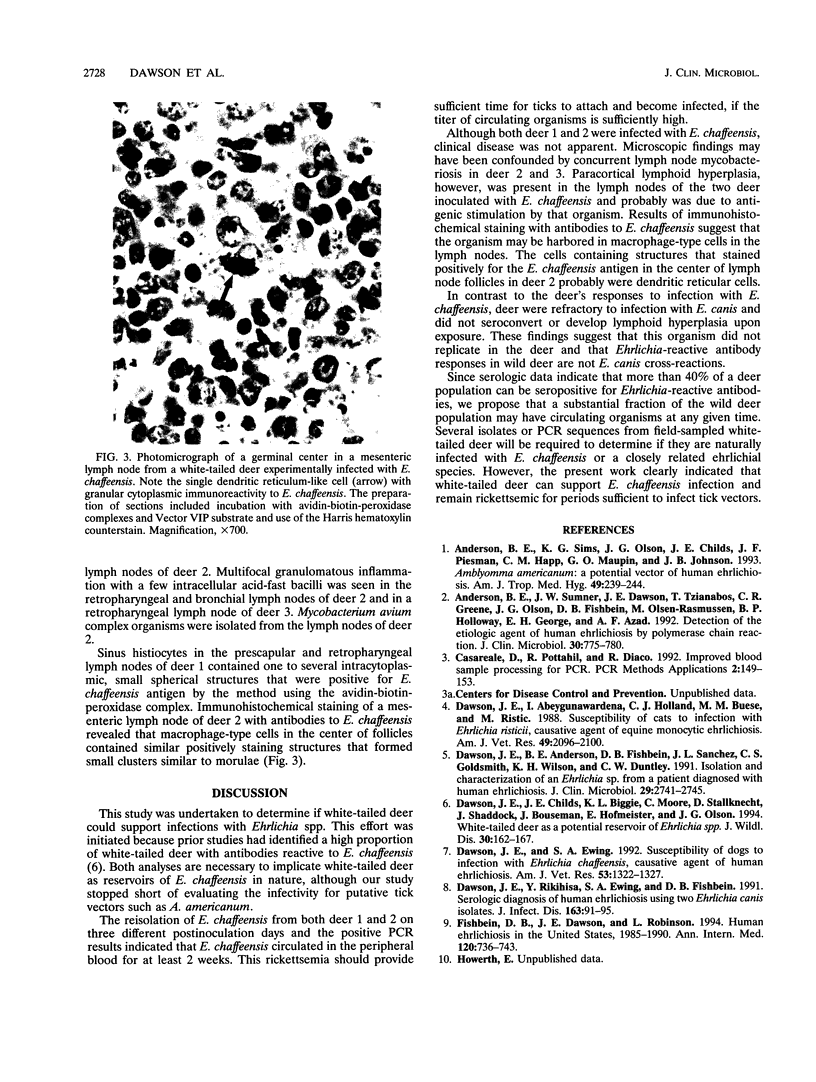
Images in this article
Selected References
These references are in PubMed. This may not be the complete list of references from this article.
- Anderson B. E., Sims K. G., Olson J. G., Childs J. E., Piesman J. F., Happ C. M., Maupin G. O., Johnson B. J. Amblyomma americanum: a potential vector of human ehrlichiosis. Am J Trop Med Hyg. 1993 Aug;49(2):239–244. doi: 10.4269/ajtmh.1993.49.239. [DOI] [PubMed] [Google Scholar]
- Anderson B. E., Sumner J. W., Dawson J. E., Tzianabos T., Greene C. R., Olson J. G., Fishbein D. B., Olsen-Rasmussen M., Holloway B. P., George E. H. Detection of the etiologic agent of human ehrlichiosis by polymerase chain reaction. J Clin Microbiol. 1992 Apr;30(4):775–780. doi: 10.1128/jcm.30.4.775-780.1992. [DOI] [PMC free article] [PubMed] [Google Scholar]
- Casareale D., Pottathil R., Diaco R. Improved blood sample processing for PCR. PCR Methods Appl. 1992 Nov;2(2):149–153. doi: 10.1101/gr.2.2.149. [DOI] [PubMed] [Google Scholar]
- Dawson J. E., Abeygunawardena I., Holland C. J., Buese M. M., Ristic M. Susceptibility of cats to infection with Ehrlichia risticii, causative agent of equine monocytic ehrlichiosis. Am J Vet Res. 1988 Dec;49(12):2096–2100. [PubMed] [Google Scholar]
- Dawson J. E., Anderson B. E., Fishbein D. B., Sanchez J. L., Goldsmith C. S., Wilson K. H., Duntley C. W. Isolation and characterization of an Ehrlichia sp. from a patient diagnosed with human ehrlichiosis. J Clin Microbiol. 1991 Dec;29(12):2741–2745. doi: 10.1128/jcm.29.12.2741-2745.1991. [DOI] [PMC free article] [PubMed] [Google Scholar]
- Dawson J. E., Childs J. E., Biggie K. L., Moore C., Stallknecht D., Shaddock J., Bouseman J., Hofmeister E., Olson J. G. White-tailed deer as a potential reservoir of Ehrlichia spp. J Wildl Dis. 1994 Apr;30(2):162–168. doi: 10.7589/0090-3558-30.2.162. [DOI] [PubMed] [Google Scholar]
- Dawson J. E., Ewing S. A. Susceptibility of dogs to infection with Ehrlichia chaffeensis, causative agent of human ehrlichiosis. Am J Vet Res. 1992 Aug;53(8):1322–1327. [PubMed] [Google Scholar]
- Fishbein D. B., Dawson J. E., Robinson L. E. Human ehrlichiosis in the United States, 1985 to 1990. Ann Intern Med. 1994 May 1;120(9):736–743. doi: 10.7326/0003-4819-120-9-199405010-00003. [DOI] [PubMed] [Google Scholar]




